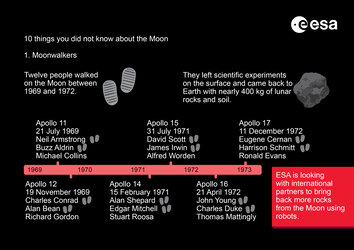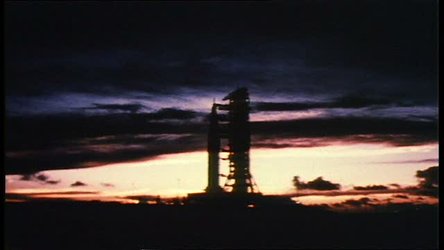Accept all cookies Accept only essential cookies See our Cookie Notice

About ESA
The European Space Agency (ESA) is Europe’s gateway to space. Its mission is to shape the development of Europe’s space capability and ensure that investment in space continues to deliver benefits to the citizens of Europe and the world.
Highlights
ESA - United space in Europe
This is ESA ESA facts Member States & Cooperating States Funding Director General Top management For Member State Delegations European vision European Space Policy ESA & EU Space Councils Responsibility & Sustainability Annual Report Calendar of meetings Corporate newsEstablishments & sites
ESA Headquarters ESA ESTEC ESA ESOC ESA ESRIN ESA EAC ESA ESAC Europe's Spaceport ESA ESEC ESA ECSAT Brussels Office Washington OfficeWorking with ESA
Business with ESA ESA Commercialisation Gateway Law at ESA Careers Cyber resilience at ESA IT at ESA Newsroom Partnerships Merchandising Licence Education Open Space Innovation Platform Integrity and Reporting Administrative Tribunal Health and SafetyMore about ESA
History ESA Historical Archives Exhibitions Publications Art & Culture ESA Merchandise Kids Diversity ESA Brand Centre ESA ChampionsLatest
Space in Member States
Find out more about space activities in our 23 Member States, and understand how ESA works together with their national agencies, institutions and organisations.
Science & Exploration
Exploring our Solar System and unlocking the secrets of the Universe
Go to topicAstronauts
Missions
Juice Euclid Webb Solar Orbiter BepiColombo Gaia ExoMars Cheops Exoplanet missions More missionsActivities
International Space Station Orion service module Gateway Concordia Caves & Pangaea BenefitsLatest
Space Safety
Protecting life and infrastructure on Earth and in orbit
Go to topicAsteroids
Asteroids and Planetary Defence Asteroid danger explained Flyeye telescope: asteroid detection Hera mission: asteroid deflection Near-Earth Object Coordination CentreSpace junk
About space debris Space debris by the numbers Space Environment Report In space refuelling, refurbishing and removingSafety from space
Clean Space ecodesign Zero Debris Technologies Space for Earth Supporting Sustainable DevelopmentLatest
Applications
Using space to benefit citizens and meet future challenges on Earth
Go to topicObserving the Earth
Observing the Earth Future EO Copernicus Meteorology Space for our climate Satellite missionsCommercialisation
ESA Commercialisation Gateway Open Space Innovation Platform Business Incubation ESA Space SolutionsLatest
Enabling & Support
Making space accessible and developing the technologies for the future
Go to topicBuilding missions
Space Engineering and Technology Test centre Laboratories Concurrent Design Facility Preparing for the future Shaping the Future Discovery and Preparation Advanced Concepts TeamSpace transportation
Space Transportation Ariane Vega Space Rider Future space transportation Boost! Europe's Spaceport Launches from Europe's Spaceport from 2012
Buzz Aldrin and the Eagle
Thank you for liking
You have already liked this page, you can only like it once!
This Apollo 11 image is an Instagram photo before its time. Were the platform to have existed in 1969, the post may have looked a little something like this:
An exciting 13-minute landing, but Neil and I made it safely to the lunar surface. Tranquility Base as serene as her name. Magnificent desolation! Too excited to sleep, we’re on the Moon for crying out loud! Let’s get to work. @nasa
#nofilter #Apollo11 #MoonLanding #TranquilityBase
Of course, this image took much longer to publish. Taken by Neil Armstrong using a Hasselblad EL Data camera, the image had to be literally downloaded to Earth in the Apollo spacecraft before the film could be developed, assessed and eventually widely circulated.
The image was snapped in the early hours of 21 July 1969, a few hours after Buzz and Neil safely touched down on the lunar surface. The 13-minute descent was tense: the lander was moving much faster than anticipated and unexpected alarms flashed from the module’s guidance computers.
But the duo made it, and the rest is history.
In this image provided by the Hasselblad Foundation, Buzz Aldrin is setting up a seismograph. The caption accompanying the Hasselblad company’s release of this image states that neither astronaut fell over in the preparation. However, Neil Armstrong got tangled in a cord but with Aldrin’s help was able to get loose.
More photos will be on display at the Hasselblad exhibition opening at Brunkebergstorg Square in Stockholm, Sweden, this weekend to mark the 50th anniversary of the Apollo 11 Moon landing. The exhibition is part of this year’s space-themed Stockholm Culture Festival.
On display are iconic images of the Moon and the lunar surface taken using Hasselblad cameras as well as less widely publicised photographs of the astronauts and camera technicians preparing for the missions.
Hasselblad cameras were a mainstay of the Apollo mission photography. The 500EL models were carried in the Command Module that orbited the Moon as well as the Eagle descent module. The 500EL Data Camera was the first to be used on the lunar surface and was specially modified for its purpose.
The camera featured a Réseau plate, a glass square engraved with crosses to form a grid that was fitted to the back of the camera. The carefully calibrated crosses were 10 mm apart and were exposed on to the film when an image was taken. The crosses helped determine distance between objects in the photos.
Réseau plates were a common technique in photography, albeit on larger cameras. Hasselblad technicians adapted the technique to a smaller format camera, bringing down the cost, a great achievement at the time.
The camera also sported a specially-designed Biogon f-5.6/60 mm Zeiss lens that provided high-quality photos with low-distortion.
To keep the camera’s internal temperature more stable in the extreme environment of the lunar surface, it was finished in silver along with the film magazines.
The camera and film magazines were also fitted with tether rings, attached to a cord, that allowed the astronauts to more easily move them in and out of the lunar module.
After two and half hours of work on the surface and a seven-hour rest back in the lunar module, Neil and Buzz lifted off the lunar surface to join Michael Collins in the Columbia command module to head back home.
ESA is joining the international space community in celebrating the 50th anniversary of humankind first setting foot on the Moon and paying tribute to the men and women who took part in this endeavour, some of whom went on to work in later NASA, ESA and international space programmes. Today, ESA and our partners are busy preparing to return humans to the surface of the Moon. During this week, we will focus on the different lunar missions being prepared by ESA and highlight of some fascinating European contributions to lunar exploration.
-
CREDIT
NASA -
LICENCE
ESA Standard Licence

Tina and Buzz Aldrin

Apollo 11 launch pad

Apollo 11: For All Mankind.

Ten things you did not know about the Moon: 1. Moonwalkers















 Germany
Germany
 Austria
Austria
 Belgium
Belgium
 Denmark
Denmark
 Spain
Spain
 Estonia
Estonia
 Finland
Finland
 France
France
 Greece
Greece
 Hungary
Hungary
 Ireland
Ireland
 Italy
Italy
 Luxembourg
Luxembourg
 Norway
Norway
 The Netherlands
The Netherlands
 Poland
Poland
 Portugal
Portugal
 Czechia
Czechia
 Romania
Romania
 United Kingdom
United Kingdom
 Slovenia
Slovenia
 Sweden
Sweden
 Switzerland
Switzerland
























